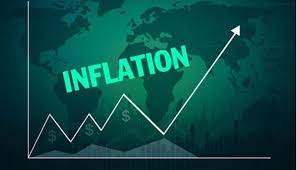Washington, Jan 12:The US inflation report for December being released Thursday morning could provide another welcome sign that the worst bout of spiking prices in four decades is slowly weakening.
Or it could suggest that inflation remains persistent enough to require tougher action by the Federal Reserve.
Most economists foresee the more optimistic scenario: They think December marked another month in which inflation, though still uncomfortably high, continued to cool.
According to a survey by the data provider FactSet, analysts have predicted that consumer prices rose 6.5 per cent in December compared with a year earlier. That would be down from 7.1 per cent in November and well below a 40-year high of 9.1 per cent in June.
On a month-to-month basis, the economists think prices were flat in December. Even more significant, a closely watched gauge of “core” prices — which excludes volatile energy and food costs — is expected to have risen just 0.3 per cent from November to December and 5.7 per cent from a year earlier. The Fed closely tracks core prices, which it sees as a more accurate indicator of future inflation, in setting its interest rate policies.
Another modest rise in core prices would increase the likelihood that the Fed would raise its benchmark rate by just a quarter-point, rather than a half-point, when its next meeting ends February 1.
For now, inflation is falling, with the national average price of a gallon of gas declining from a USD 5 a gallon peak in June to USD 3.27 a gallon as of Wednesday, according to AAA.
Supply chain snarls that previously inflated the cost of goods have largely unravelled. Consumers have also shifted much of their spending away from physical goods and instead toward services, such as travel and entertainment. As a result, the cost of goods, including used cars, furniture and clothing, has dropped for two straight months.
Economists will pay particular attention Thursday to the prices of services, which are seen as a stickier component of inflation. They reflect rising wages among labour-intensive businesses such as restaurants, hotels and health care companies.
If the data show only a small increase in services costs, that would likely strengthen hopes that the economy can avoid recession and instead experience a “soft landing.” Such a scenario would mean slow growth and likely a small rise in unemployment but much less economic pain than a full-fledged recession.
Indeed, last week’s jobs report bolstered the possibility that recession could be avoided. Even after the Fed’s seven rate hikes last year and with inflation still high, employers added a solid 223,000 jobs in December, and the unemployment rate fell to 3.5 per cent, matching the lowest level in 53 years.
At the same time, average hourly pay growth slowed, which should lessen pressure on companies to raise prices to cover their higher labour costs.
“The soft landing narrative has gained some credibility this year, and that has also led to a stock market rally,” said Michael Arone, chief investment strategist at State Street Global Advisors.
Another positive sign for the Fed’s efforts to quell inflation is that Americans overall expect price increases to decline over the next few years. That is important because so-called “inflation expectations” can be self-fulfilling: If people expect prices to keep rising sharply, they will typically take steps, like demanding higher pay, that can perpetuate high inflation.
On Monday, the Federal Reserve Bank of New York said that consumers now anticipate inflation of 5 per cent over the next year. That’s the lowest such expectation in nearly 18 months. Over the next five years, consumers expect inflation to average 2.4 per cent, only barely above the Fed’s 2 per cent target.
Still, in their remarks in recent weeks, Fed officials have underscored their intent to raise their benchmark short-term rate by an additional three-quarters of a point in the coming months to just above 5 per cent. Such increases would come on top of seven hikes last year, which caused mortgage rates to nearly double and made auto loans and business borrowing more expensive.
Futures prices show that investors expect the central bank to be less aggressive, and implement just two quarter-point hikes by March, leaving the Fed’s rate just below 5 per cent. Investors also project the Fed will cut rates in November and December, according to the CME FedWatch Tool.
Fed Chair Jerome Powell has sought to push back against that expectation of fewer hikes this spring and cuts by the end of the year, which can make the Fed’s job harder if investors bid up stock prices and lower bond yields. Both trends can support faster economic growth just when the Fed is trying to cool it down.
The minutes from the Fed’s December meeting noted that none of the 19 policymakers foresee rate cuts this year.
Still, last week James Bullard, president of the Federal Reserve Bank of St. Louis, expressed some optimism that this year, “actual inflation will likely follow inflation expectations to a lower level,” suggesting 2023 could be a “year of disinflation.” (AP)
Trending Now
E-Paper


